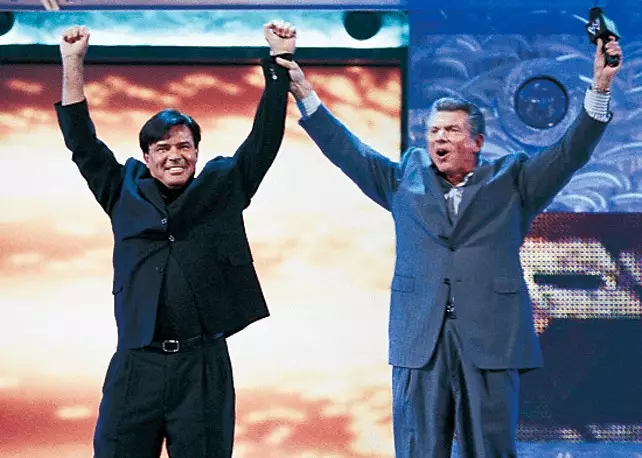
Eric Bischoff has stood at the very top of professional wrestling. One of only two men in the modern era who could realistically claim to run the number one wrestling company in the world, Bischoff's spell as President of World Championship Wrestling saw the Atlanta company overtake Vince McMahon's WWE (then WWF) for a two-year period. On the 27th and 28th April, Eric will be at Liverpool Exhibition Centre attending the For The Love Of Wrestling convention. SPORTbible spoke to Bischoff ahead of his UK trip, and in this first part of an exclusive interview we cover how Eric got started in the business, and his journey to the very top of professional wrestling.
Growing up a wrestling fan, Bischoff closely following the action in his local company, the American Wrestling Association (AWA). A young Eric Bischoff had never really considered his hobby to be a possible career however. "I never even had the most obscure random thought about getting into the wrestling business. My opportunity in wrestling came along more as a consequence or just good timing than it was anything by design." That soon changed when the very same AWA he'd loved as a child had a job opening. "I got into the business (and) I was so excited and happy to learn all of the things that I needed to learn. I got into the wrestling business on the business side of it, and the television side of it. First I was selling syndication, which is basically selling the product. Then later on into corporate sponsorship then later on into production and then later on into being on camera."
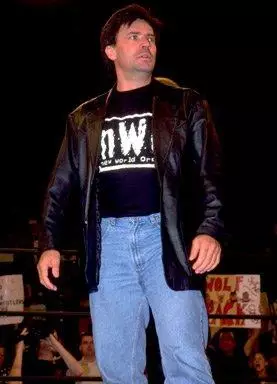
From never imagining a career in wrestling, Bischoff had graduated into a role as an on-screen announcer. Not only that, but he found himself working alongside one of his heroes, AWA chief and legendary wrestler Verne Gagne.
"That's one of the things that I cherish. When I reflect back on what I think are the most important moments for me personally, I think having the chance to work for Verne is right there at the top of that. I was a fan of Verne Gagne when I was a young teenager growing up in Minnesota. It was a really big deal for me to all of a sudden be sitting in an office working with him. It's respect but it's also when you put somebody up on a little bit of a pedestal because of who they are. You're always more or less in awe of them, they're a mentor even if that's not the formal role or relationship. I had a great relationship with Verne, a lot of people didn't. It was like a lot of people in that position where people are going to think the world of you and others are going to have a different perspective. Verne's controversial, there's a lot of talent that had issues with Verne. I never had that. I got along with Verne from day one, we grew to become pretty good friends and did a lot of things outside of wrestling together. So my relationship with him was excellent and one that I'm very grateful for."
While grateful for the opportunity, and delighted to work with one of his heroes, Eric would look for alternative employment when it became clear the AWA was not long for this world. The company was creaking under the pressure of high-profile talent losses. "When I got to Verne in 1987 a lot of that top talent that started in AWA, including Hulk Hogan and Jesse The Body Ventura and Bobby Heenan and Gene Okerlund and so many others, including Curt Hennig, had already left. They'd already jumped ship in 84 and 85." The adverse effect of this left the AWA's announcer in financial peril. "I hadn't received a paycheck in a long time and I was financially struggling very badly, I had two young kids and a wife at home. I was having a hard time heating my house and keeping our cars from getting repossessed. Financially things were really bad."
Eric would arrive at WCW, a distant number two to Vince McMahon's powerful operation but still a reputable destination. His first impressions of the company certainly underlined what a step up this was for the new recruit.
"I was amazed at many things. They had their own travel department, they had so many things that the AWA didn't have. The post-production facilities for WCW, compared to the WWF they were pretty barbaric, but compared to the AWA it was state of the art. For me having seen the other side, I was just like "Wow this is great". It's Turner Broadcasting! I'd walk around the CNN Center when I first got hired saying to myself 'Can you believe this? You're actually working for the company that owns CNN'. It was such a sense of gravity in a good way, it felt very stable compared to what I had come from, which was a family owned business that was struggling the day they hired me. To go into a place like WCW where everybody knew (billionaire Turner Broadcasting chief) Ted Turner was a big supporter, and he owns the entire company so we're pretty secure here. It was a great feeling for a couple of years."
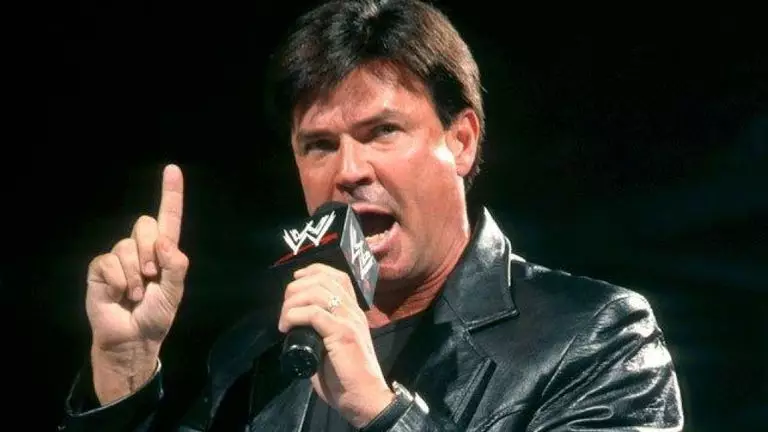
Armed with experience in syndication, television production and a sharp insight into how pro wrestling worked, it didn't take Bischoff long to impress his new bosses. The Minnesotan was soon progressing through the organisation.
"WCW was pretty dysfunctional from a management point of view. Bill Shaw, who was Vice President of WCW, decided we're going to separate the company so operations is going to answer to one person, and television production is going to answer to someone else. And that someone else was me. So my only concern was to improve the quality of the television product as much as I could. That included the fundamental things like lighting, audio and graphics and camera angles. Strictly production value type of issues. Later on I got promoted from Executive Vice President to Vice President and ultimately President. I was then overseeing all the aspects of the company. That's when I started thinking 'How are we going to start growing this business?' If we're making a million dollars a year in licensing, how do we make 10 million a year? What's the strategy, what are our tactics? It didn't start happening until about 96."
When Eric took over he faced a seemingly insurmountable challenge. The WWE had long been wrestling's market leader, the company's name as synonymous with the art form as "Coke" is to cola drinks. The question was on everybody's lips, but Ted Turner was brave enough to vocalise it. 'How do we beat Vince?' asked the media mogul. Bischoff's on the spot reply would define professional wrestling for the ensuing decade, and spark an era still talked about with reverence to this day. Eric's solution was to go head-to-head with the WWE, sparking a television tete-a-tete that would come to be known as "The Monday Night War".
"I think my first thought was 'Oh f*ck!" How am I going to pull this off?' I was excited on the one hand because I was sitting across from someone like Ted Turner and knowing he had enough confidence in me to take that kind of a huge risk made me feel really good. I walked out of that meeting, I actually stopped myself in the middle of the CNN Center, I had a Diet Pepsi and sat down and went 'Wow! What did I just do?!'. I knew, as exciting as the opportunity, was it was also a massive risk. I knew if I failed it would be a long time before I got another massive opportunity at Turner Broadcasting, so I knew I had to succeed. For a while, it may have been just a couple of days, I was pretty overwhelmed by the challenge, because I hadn't thought about it. I didn't go into that meeting hoping and wishing and having thoughts of 'What would I do if I got the chance to go head to head with the WWF (now WWE)?' That thought hadn't crossed my mind. When Ted looked at me and said 'what do we need to do to be competitive?', I was winging it. I knew that going live head-to-head that was a correct answer, it was kind of obvious. It took me two or three days to kind of get my feet underneath me and realise this is a hell of an opportunity, it's not going to go away. How am I going to do this? As soon as I started thinking about the how I'm going to do it, all of the concern or intimidation or feeling of being overwhelmed by the challenge all went away. It went from 'Oh my god how do I do this?' to 'Oh my god I can't wait to get this done!'"
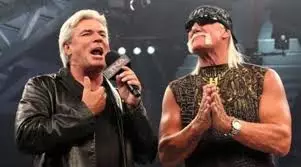
It was a bold move for sure, to take on the industry leader on the same night at the same time. Asking the wrestling audience to choose between the two programmes seemed like commercial suicide. However it worked, WCW edged into the lead in the ratings war with a more modern, gritty and star-studded product than what the WWE offered at the time. The success reverberated throughout the formerly-beleaguered organisation.
"I would be disingenuous if I told you in my own mind I thought that we were going to be successful. I knew I had to do everything I could to be successful. I knew I had to give it everything I had. But I was taking a lot of risks, and any time you take a lot of risks in doing things that have never been done before, the chances of failure go up exponentially. With every new idea, every new way of doing things, every risk you take, your chances for failure increase. So when we actually started succeeding it was a combination of joy and relief. But most of the joy that I felt honestly, and looking back on it now I'm not sure that I thought about it consciously then as much, but now I do when I look back. What I'm most grateful for when I look back is not how I felt, but how almost every employee in WCW felt. From day one when Ted Turner opened the doors, WCW was a dismal failure. There were people in Turner Broadcasting, not Ted Turner thankfully, that were doing everything they could to get Ted to pull the plug on WCW. That was going on before I got hired as an announcer. Everybody knew that the only reason WCW existed was because Ted loved it. As long as Ted loved it, nobody could talk him out of it."
"Even though there was a sense of security cos Ted made it clear that he believed in the product, at the end of the day everybody at Turner Broadcasting, all the senior executives just below Ted, couldn't stand us. They hated the fact that WCW was a part of Turner Broadcasting. And because we were losing millions of dollars, and embarrassing things were making their way into the press; the majority of Turner Broadcasting couldn't wait until WCW went away, and naturally the WCW executives felt like unwanted children as a result. Being able to turn that dynamic around. To be able to make them proud of the company they've been working so hard on for many years, and to prove that they really could do the job was such a cool thought and such a great memory. I wish I would have really been more aware of it and appreciative of it in the moment because everything happened so fast, it all kind of went by at 100 miles an hour. It was one right after another and when they go by that fast you really don't get a chance to appreciate them the way you should."
One of the pivotal moments of this heady period was the New World Order (NWO) storyline. The company was ostensibly invaded by recent WWE defectors Kevin Nash and Scott Hall, under the illusion that they had come from McMahon's operation to disrupt WCW. The pair often spoke of "The Third Man", a fellow invader who would join them in their reign of terror. Longtime wrestling fans will know by now that the third interloper ended up being Hulk Hogan, betraying the fans after over a decade of being the most beloved good guy in wrestling. However the path to this historic moment was not always clear.
I had tried to convince Hulk to turn heel about a year earlier and he wanted absolutely nothing to do with that. He thought it was too big of a risk, he had spent 20 years at that point building this brand and this image, building this relationship with the audience. And here I was asking him to completely flush it all down the toilet cos I thought it might work and he was not interested in it. It wasn't until a year later when Hulk was filming a movie on location that he called me up and said 'Hey can you get to LA? I'd really like to talk to you'. This is right about the time Scott Hall made his debut, Kevin Nash was already in. We'd started the 'Who's the third man?' part of the storyline. That's right around the time Hulk called me and said 'Who's going to be the third man?' I did know, but I didn't want to tell him. I wanted to keep it a super-secret so I said, 'Who do you think it should be?'. He paused just for a minute, took a swig of beer and a puff of his cigar and said, 'It should be me'. I said 'So you're ready to turn heel?' and he said, 'I'm your guy'. It really was Hulk's idea. He saw that rather than just randomly turning heel and doing something out of desperation, because the babyface Hulk Hogan character really wasn't working the way we'd hoped, just making a change without a real plan is really a bad move. (But) when the story started playing itself out, it looked like it was going to make sense. At that point Hulk was willing to take the risk, fortunately he did and the rest is history."
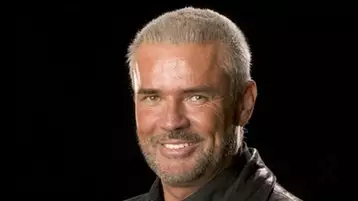
The heel turn, and the iconic Hollywood Hogan character that it spawned have passed over into wrestling folklore. However it was not the original plan, as Bischoff admits. "I had already made a decision that the third man was going to be Sting. I already had a lot of conversations with Sting about that, and Sting was prepared to do it and was excited about doing it. When Hulk called me and offered to turn heel I had to make a decision. Whether to go with the original plan and turn Sting, or take advantage of this new opportunity and turn Hulk."
Sting would still go on to play a vital role in the NWO storyline, as the perfect foil for Hogan's new villainous persona. Previously a neon-clad, face-painted babyface, Sting took on a brooding, monochrome colour palette in his war on the New World Order faction. The look was inspired by the 1994 film The Crow, where Brandon Lee's character of Eric Draven avenges the death of his wife. This was to serve as the perfect contrast to Hogan and his horde of invaders.
The character was born out of the storyline. If you go back and look at the very basics of the NWO storyline, especially in the beginning. It was Scott Hall and Kevin Nash who used to work for WCW. Neither one of them got much of a push or had much success. They went over to the WWF, became big stars and now they were coming back to WCW to get revenge on the people that never paid them the respect that they deserve. As the storyline grew and evolved and became a little bit more complex, the mission of NWO was to take out WCW and run them out of town. The Crow kind of evolved once it became obvious to our audience that the NWO was just dominating WCW. People were jumping from WCW to NWO right and left."
"Sting was the face of WCW along with Ric Flair. He started in WCW, he was the top babyface and he had legions of fans. All of his peers, the guys that wrestled with him in WCW storyline wise, all kind of abandoned him. So that was the motivation. Sting, the surfboard Sting with the shiny sequined suits and the bleach blonde hair and the painted face. He went into this dark, depressed mode and became very withdrawn because so many of his friends had turned their backs on him. He was like this lone wolf character lurking in the shadows, not sure of what he wanted to do or how he wanted to do it, As that story started to emerge Scott Hall was the one that said 'What if you change your look completely? What if you got into this Crow type character?' And that's how that character was born, it was born out of the storyline."
The Hogan-Sting war captivated audiences thanks to a unique approach to wrestling storytelling that has not been attempted since. Sting did not wrestle for over a year, seeing no need to tangle with opponents that weren't his nemesis Hogan. The nefarious Hulkster would do everything in his power to avoid clashing with the master of the Scorpion Deathlock, and the thrill of the chase kept audiences coming back foe months on end. It was a storytelling approach that Eric had long wanted to try.
"I was really trying to design a way that you could have an 'A story', meaning that was the story that we're going to commit as much resources to as we can. That was a very different way of doing creative in wrestling, especially in WCW because up until that point most of the storytelling was in monthly increments. Your most important story would get four weeks of TV then you'd blow it off on a PPV and you'd start all over again. I didn't like that formula because I felt for an audience to really get stuck into a story, it needs to take longer than that. I went into the Sting story intentionally trying to craft it so it lasted at least 6 months. But it was pretty evident going into it after the first couple of weeks, it was going to be easy to really stretch it out. I went into it wanting a really long term storyline, but in all honesty I didn't think I'd be able to get it to 12 months. I think we went to 15 months."
Another indelible memory from the golden age of WCW was the rise of Goldberg. A near-silent assassin who racked up a huge undefeated streak, his name used to boom out around arenas around the world during his 90s peak. It didn't take Bischoff and his creative team long to see the potential behind the behemoth.
"It wasn't like anybody came up to me and said, 'We have this idea, if we can find the right guy he could go on this streak and be like 278-0 and he's unbeatable'. Nobody had the idea before Bill Goldberg came along. We kind of rushed him through (WCW training school) the Power Plant very quickly. We wanted to get him on TV but he had a very limited skillset. He was a great athlete but he was still new to the business. He was a great NFL football player but he had never wrestled before, so he only had limited skills. We wanted to get him out in front of the people, so we put him in (non-televised) dark matches. We would go and produce a TV live event and we'd give him a match or two before the cameras started rolling. That gave us a chance to see how the crowd reacted to him, and how he reacted to the crowd. It gave us a chance to see that energy in real time. It only took about 6 or 8 outings before we went 'Holy crap! This guy's electric!'. He's lightning in a bottle. We need to figure out a way to make this work. And that's where the streak came. Because he couldn't do anything else, he couldn't go out there and have a 20 minute match to a draw. He didn't have the skillset to do that. He had to be able to go out in very short order, execute 2 or 3 moves he could do really well and be this superhuman as a result."
Bischoff was responsible for so many memorable moments during his time at the WCW helm, taking the company to the number one slot in a previously monopolised industry. To narrow it down to a personal favourite was a challenge, but Bischoff went into detail on how WCW managed to climb the ladder in such spectacular fashion.
"The Hulk Hogan heel turn on PPV was massive, that was a really big pivot point. It changed everything not only for WCW, but it changed everything in the wrestling business including the WWE. I would have to point to that. Beyond that there were so many other things that even if I ran through them all, they would seem like small things to most people. So much of what allowed WCW to become the number one wrestling company in the world were really tactical changes and strategies. All of them were out of the box as they say. It's an overused term, but all of them were ideas and thoughts and approaches to the business that nobody had ever done before. And some of them were big, some of them were very small and some viewers wouldn't even notice them. But it was the combination of all of those efforts that really got us to do the dance. And it's the little things that I'm most proud of believe it or not. It's not the big things."
Coming up in the Part 2 of our Eric Bischoff interview, we look at the death of WCW, Bischoff's memorable WWE tenure as well as his upcoming convention appearance at For The Love Of Wrestling. For more details on the convention check out www.fortheloveofwrestling.co.uk and https://www.facebook.com/pg/FTLOWrestlingUK/. You can also follow @ftlowrestling on Twitter and Instagram for more updates.
Featured Image Credit: